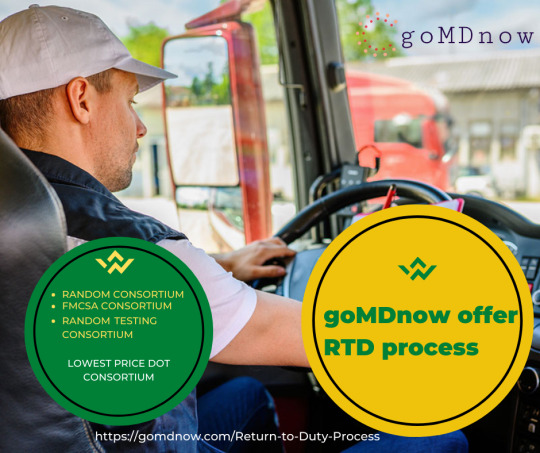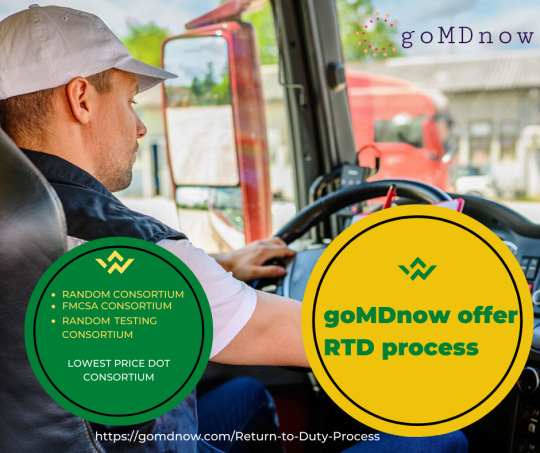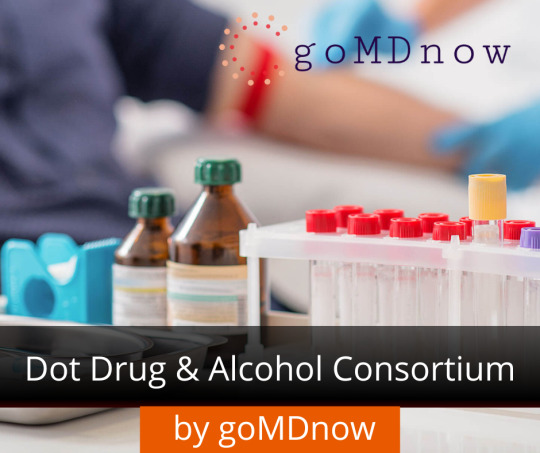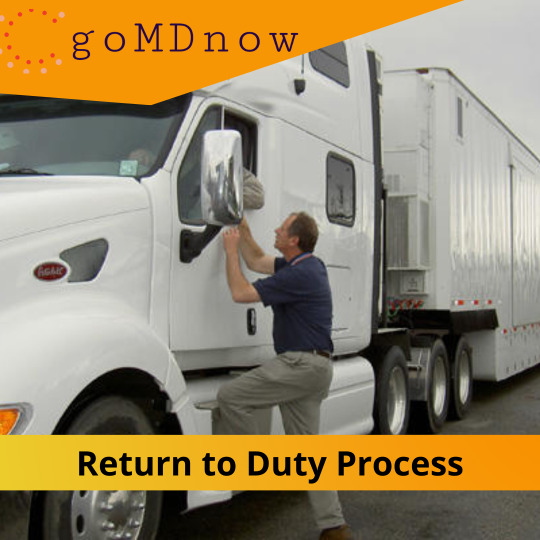#dotrandomconsortium
Text

Nationwide FMCSA Drug & Alcohol Consortium
goMDnow follows all Department of Transportation (DOT) regulations and rules to safeguard your company's compliance. We provide comprehensive solutions for employment drug and alcohol screening.
✅ Our Services:
Random Testing Consortium
RTD Process
Urine Test
Return to Duty Process
DOT Consortium Drug & Alcohol Testing
DOT Drug & Alcohol Consortium
DOT Random Testing Consortium
DOT Consortium Service
Owner operator DOT Random Consortium
Consortium Random Testing Pool
Need a TPA or C/TPA
#instant drug test#drugs consortium#drugs and alcohol#dotdrugtesting#dot/non-dot drug testing#dotrandomconsortium#fmcsaconsortium#lowestpricedotconsortium#randomtestingconsortium#artists on tumblr
2 notes
·
View notes
Text

goMDnow follows all Department of Transportation (DOT) regulations and rules to safeguard your company's compliance. We provide comprehensive solutions for employment drug and alcohol screening..
#drugs consortium#drugs and alcohol#dot/non-dot drug testing#dotrandomconsortium#fmcsaconsortium#dotdrugtesting#randomtestingconsortium#lowestpricedotconsortium
0 notes
Text
Join the DOT Random Test Consortium now:
Nothing beats the convenience of goMDnow's over 15,000 + collection sites in the US. You won't get very far without finding one of our drug and alcohol testing locations. Ordering alcohol and drug tests online is just as easy. In addition to guiding businesses through every necessary step to ensure they are prepared for all testing-related issues, we have revolutionized the drug testing industry by making testing more accessible than ever.

The many benefits of using goMDnow include:
• Access to more than 15,000 + collection points nationwide
• SAMHSA Certified Laboratory, Certified Urine Collector and Certified Breath Alcohol Technician
• Cutting edge web-based technology for project management, record keeping, random selection and test results reporting
• Ongoing advisory and administrative support
• Certified full-time MRO results report - via fax, email and/or web
• If auditing a company's drug and alcohol testing program, USDTC shall assist with all necessary audit requests. Copies of any correspondence from regulatory officials regarding the company’s drug and alcohol testing program should be forwarded to the USDTC as soon as it is received.
• DOT Clearinghouse advice and assistance
Consortium and random drug testing programs are available for both:
• DOT Employers
• DOT owner-operator
We are professionals in establishing and managing DOT compliant testing programs for any business in the transportation industry. If you are a DOT-regulated company and need a DOT-compliant drug and alcohol program, we can provide your business with complete testing and planning services.
We strictly adhere to DOT compliance standards in all our tests. Unlike other medical facilities that only offer drug testing, we are qualified to offer DOT compliant tests with all required components.
Employers regulated by the U.S. Department of Transportation (DOT) require a random drug testing program. If you are an owner-operator, you are required to participate in the Consortium Randomized Drug Testing Program.
Smaller DOT-regulated employers also have the option of enrolling in a random testing consortium program to facilitate compliance. Large DOT-regulated employers often require an independent DOT random testing program.
#drugs consortium#drugs and alcohol#dot/non-dot drug testing#dotrandomconsortium#randomtestingconsortium#dotdrugtesting#fmcsaconsortium#lowestpricedotconsortium
0 notes
Text

At goMDnow, you can enroll very easily because process is very simple, quick, and easy for everyone. Our experts provide full support professionally with advice and complete guidance.
Sign Up:
980-202-1466 https://gomdnow.com/Return-to-Duty-Process
#drugtest#drugs consortium#drugs and alcohol#dotrandomconsortium#lowestpricedotconsortium#dot/non-dot drug testing#randomtestingconsortium#fmcsaconsortium#random consortium
0 notes
Text

Random Testing Consortium
#randomtestingconsortium#drugs consortium#drugs and alcohol#dotdrugtesting#dotrandomconsortium#dot/non-dot drug testing
0 notes
Text

goMDnow offers Dot Medical & Drugs Testing Service
goMDnow’s mission is to provide the best drug testing solutions to meet varying workplace protection needs as drug abuse increases. Our main goal is to make DOT certification and drug testing informal for transport businesses of all sizes while serving them to fulfill DOT regulations. gomdnow.com
#drugs consortium#drugs and alcohol#dotrandomconsortium#fmcsaconsortium#dot/non-dot drug testing#dotdrugtesting#lowestpricedotconsortium#consortium#drugtest
0 notes
Text
When is DOT drug testing required for safety-sensitive employees?
DOT Drug Testing is required when:
Before employment, or before you begin your job duties.
Reasonable suspicion/reason:
if one or more trained supervisors reasonably believe/suspect that you are under the influence of a drug. This must be based on observations of appearance, behavior, language, smell, etc.

Random Test:
Random testing must use a truly random selection process - every employee must have an equal chance of being selected and tested. These are done quarterly.
A return-to-duty process is required for drug and alcohol violations:
You cannot return to any DOT work until you have been tested and may have taken at least 6 surprise tests in the first 12 months. These tests must be performed under direct observation.
Follow-up testing after the resumption of work:
Substance Abuse Professionals (SAPs) administer follow-up testing for up to 5 years, determining how many times employees are tested and what substances are tested. These are done in addition to other DOT-required tests.
Post-accident Testing:
This is required if you are involved in an accident that meets certain DOT standards. An alcohol test must be done within 8 hours of the accident and a drug test within 32 hours.
What happens if I fail the DOT drug test?
DOT regulations require your employer to immediately release you from performing any DOT safety-sensitive work if you fail a DOT-mandated drug test. There may also be other consequences, such as losing your certification or license. It depends on your company policy or employment agreement.
goMDnow's workforce experts stay informed about DOT regulations and can ensure your business remains compliant. If you are interested in using goMDnows regulated drug testing services, please get in touch with a member of our team. Our clinic also has a certified medical examiner on hand to perform DOT exams.
The DOT rule, which took effect on January 1, 2018, changed the term opioid to opioid and added four semisynthetic opioids to the test group.
#drugs consortium#drugs and alcohol#dot/non-dot drug testing#dotrandomconsortium#dotdrugtesting#fmcsaconsortium
0 notes
Text
What happens if I or one of my employees tests positive for drugs or alcohol?
The driver must be removed from his safety-sensitive position immediately upon any drug or alcohol test positive. Note that a positive alcohol test is determined to be a 0.04+ BAC level, but any driver with an alcohol level below 0.04 should be immediately removed from their safety-sensitive functions for at least 24 hours before performing DOT safety-sensitive work functions.

If the MRO determines that the drug test is positive, or the BAC level determines that the alcohol test is positive, the employee must be referred to a Substance Abuse Professional (SAP) as required by the DOT. This does not mean that employees must be maintained, employment depends on your drug/alcohol policy. Before an employee can return to a DOT safety-sensitive function, the employee must complete the activities outlined by the substance abuse professional and have a negative drug test on file as a result of the "return to work" test. In addition, employees are subject to additional random drug/alcohol testing as determined by SAP, known as "follow-up" testing (DOT mandates a minimum of 6 follow-up tests in the first 12 months after an employee's return to work). Subsequent testing may last up to 5 years, according to SAP. Employers are not required to pay for return to work or follow-up testing, as this is usually paid by employees.
Why do I or an employee seem to be getting tested all the time?
DOT requires a compliant program to be truly random, and that DOT testing is based on 50% of the testing pool for drug testing and 10% for alcohol testing. Let's take an average random test pool of 1000 people for a monthly test cycle as an example. About 42 people are tested for drugs and 8 people are tested for alcohol each month. Now, in order for the monthly schedule to be truly randomized, all individuals must have the same chance of being selected for a drug or alcohol (or even both) test. Some people will be tested multiple times a year, while others won't have it at all. This is a truly random selection process, supported statistically, no one will ever be selected outside of a random process.
#randomtestingconsortium#drugs and alcohol#drugs consortium#dotrandomconsortium#dot/non-dot drug testing#dotdrugtesting
0 notes
Text

goMDnow offers Random Testing Consortium
goMDnow provide a technological solution that simplifies the DOT certification and drug screening process for transportation companies and their drivers.
gomdnow.com/RandomConsortium
#dotrandomconsortium#drugs consortium#drugs and alcohol#dot/non-dot drug testing#dotdrugtesting#consortium
0 notes
Text
Alcohol and Drug Random Testing Requirements
Drug Random Testing
The main requirements for the selection and notification of random test drivers are listed below.
1. Drivers should be selected using scientifically valid methods, such as random number tables or computer random number generators, that match the driver's social security number, payroll identification number, or another comparable identification number.

In the selection process used, each rider shall have an equal opportunity to be tested at each selection.
2. Employers should ensure that random inspections are not notified in advance and are distributed reasonably throughout the year.
Employers need to have a plan in place to ensure employees don't have time to know the test "has been completed for a year." For example, if an employer is required to take only two tests, and that number is completed by midsummer, the employer's plan must ensure that more tests can be taken by the end of the calendar year. Another option is for employers to join a coalition with a testing pool large enough that their drivers are always randomly tested.
3. The employer shall ensure that the selected driver goes to the testing point immediately after being notified of the selection.
Employers should notify and test drivers as soon as possible after drivers have been selected. This means that, when conducting driver selection, employers should require all drivers selected to submit the test at the first available time at a terminal or other suitable location.
Employers may not defer a driver's test until the next driver name selection. Although the FMCSA has permitted this practice in the past, the FMCSA believes that some employers may use this interpretation by manipulating the timing of such tests to conduct quasi-reasonable-suspicious testing of drivers, rather than random testing that is not based on individualization. Suspect. Additionally, employers may have been delaying testing to deliver goods or have drivers in question "clean up" before taking the test.
4. Employers can pool interstate and intrastate drivers for random testing.
Since this rule applies to all drivers with CDL, no separation is required. However, FMCSA will prohibit any employee not subject to any DOT agency testing rules from being included in the random selection pool.
If a driver works for two or more employers subject to FMCSA or DOT agency regulations, the driver must participate in a random testing program for all employers.
#randomtestingconsortium#drugs consortium#dot/non-dot drug testing#drugs and alcohol#dotrandomconsortium
0 notes
Text

Random Testing Consortium
RTD Process
Urine Test
Return to Duty Process
DOT Consortium Drug & Alcohol Testing
Nationwide FMCSA Drug & Alcohol Consortium
Drug Testing Consortium Services
#return to duty process#drugs consortium#dot/non-dot drug testing#drugs and alcohol#dotdrugtesting#dotrandomconsortium
0 notes
Text
How Return to Duty Process Works?
Return to Duty Process:
The process always starts with an assessment. The employee will meet face-to-face with SAP, who will assess the nature and extent of the individual's drug or alcohol problem.
It may be helpful to point out here that SAP is a clinical professional who specializes in addiction diagnosis and treatment. Not only that, but they also have special recognition from the DOT - in addition, they maintain key professional qualifications and receive ongoing education on the latest addiction treatments. These are truly the leaders in addiction care.

During the evaluation period, SAP will recommend some treatment options or educational opportunities for the employee. Employees are then expected to receive these treatments; again, as an employer, you don't have to pay for it. You just need to make sure your employees understand these options.
Once the employee has completed treatment and/or education, he or she will meet again with SAP. SAP will then declare whether the employee is fit to return to work.
Key point: SAP will simply determine if an employee is eligible to return to work. As an employer, it is your decision whether or not you want that employee to return to work.
The Timeline for Return to Duty
Both employees and employers want to know how long the process will take - unfortunately, there are no easy answers here. It really depends on the SAP and they may recommend different treatments to different people depending on the nature and extent of the substance use problem.
A full hospital stay usually takes several months, but it's not necessary for every employee who tests positive for drugs or alcohol - so in the end, it's just that you have to work with the substance abuse clinician you the work with problem solved and.
#rtdprocess#drugs consortium#consortium#dot/non-dot drug testing#drugs and alcohol#dotrandomconsortium
0 notes
Text

goMDnow offers Dot Drug & Alcohol Consortium
RTD Process
Urine Test
Consortium Service
Return to Duty Process
#rtdprocess#drugs consortium#dot/non-dot drug testing#randomtestingconsortium#return to duty process#dotdrugtesting#drugs and alcohol#dotrandomconsortium
0 notes